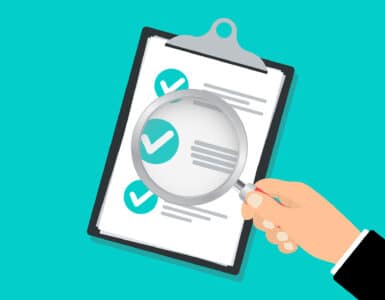Do one thing: Life insurance can be more affordable than you think, but don’t settle for the first plan you find. Shop around to learn more about a variety of plans and price points for the best value.
Intro to Life Insurance
In the next few months, if you aren’t self-employed, you will likely get an email from your human resources department reminding you that your employee benefits are up for renewal. Many folks only have a couple of weeks during open enrollment to make any changes to their benefits, which may cover group life insurance plans. So now is the perfect time to check in and make sure you are taking advantage of any plan offered through work, and also to see if you may need more coverage.
Who has Life Insurance?
Recently published research shows that 51% of U.S. adults report having some type of life insurance coverage – either group or individual or both – according to the 2025 Insurance Barometer Study, conducted by LIMRA and Life Happens.
Breakdown of Life Insurance Access
Here’s the breakdown of who has access to life insurance plans in the U.S. based on company size, according to data released in September from the Bureau of Labor Statistics:
- 42% of private industry workers in businesses with fewer than 100 workers;
- 72% of workers in establishments with 100-499 workers;
- 87% of workers in companies with 500 or more employees.
Who Needs Life Insurance?
For a lot of people, thinking about life insurance can be really tough, since it brings up issues about death. Unfortunately, bad things happen all the time, so it’s better to be prepared to take care of your loved ones after you are gone than the alternative – leaving them to figure out how to pay for all the things your income covers.
One way to move forward with considering life insurance is to remove the word ‘life’ from the equation and think of it as income insurance. Why is that? Life insurance can replicate an income stream for your loved ones once you are gone.
Who Doesn’t Need Life Insurance?
If you are single and don’t support anyone else with your income, you may not need life insurance.
“Life insurance should be a key consideration in any financial plan. I usually tell clients if there is anyone who relies on your income, you probably need insurance,” says Mike Hunsberger, ChFC, CFP, CCFC, owner of Next Mission Financial Planning. “I was talking to an insurance broker this week who said you typically need insurance if you owe someone or if you love someone. I really like that also.”
Types of Life Insurance
There are two main types of life insurance available, and a number of types that fit in those categories.
Term Life Insurance
One of the two is term life insurance, which is often the:
- Least complicated
- Cheapest option
How Term Policies Work. A term policy will last for a specific term or amount of time, such as 1 year, or 10, 20, or 30 years, then it terminates (or ends). This insurance includes a death benefit – with no investment attached – so when the term ends, the coverage ends. Because of the affordable price point, term life insurance is often the best option for covering the needs of most people.
Cash Value Life Insurance
Cash value coverage includes:
- Death benefit
- Investment component
How Cash Value Insurance Works. Unlike term, this coverage is designed to stay in effect for life – or as long as you choose.
Different varieties of cash value insurance include:
- Whole life
- Variable life
- Universal life
The investment or cash value portion of the policy means that an owner may be able to access some of the money while they are still alive, by withdrawing from the account or borrowing from its value.
How Much Life Insurance Do You Need?
Numerous online calculators can help you figure out how much life insurance you need.
Consider The Dime Method. One method for making the determination is called the DIME method, says Hunsberger. That stands for:
- Debts
- Income
- Mortgage
- Education
When using the DIME Method, Hunsberger says to do the following:
- Add up how much money you owe (your debts).
- Determine how much income you would need to cover those debts.
- Determine how many years that income would need to continue.
- Add how much you may owe on a mortgage.
- If you have children, include how much their education could cost. (There are also online calculators to help determine this figure.)
- Subtract your investable assets, and you’ll have a ballpark of how much insurance you need.
- Revisit this regularly as insurance needs change over time.
Who Can You Turn to For Help?
“It’s generally best to ask an independent, fee-only financial advisor about how much coverage you need, and not the salesman who is trying to sell you life insurance,” says Kevin C. Feig, CFP, CPA/PFS, founder of Walk You To Wealth. “It’s like the adage of asking a barber if you need a haircut. For most people, a simple and low-cost term policy will suffice, but too often, people are sold complicated life insurance policies that aren’t necessary for them.
With reporting by Casandra Andrews






